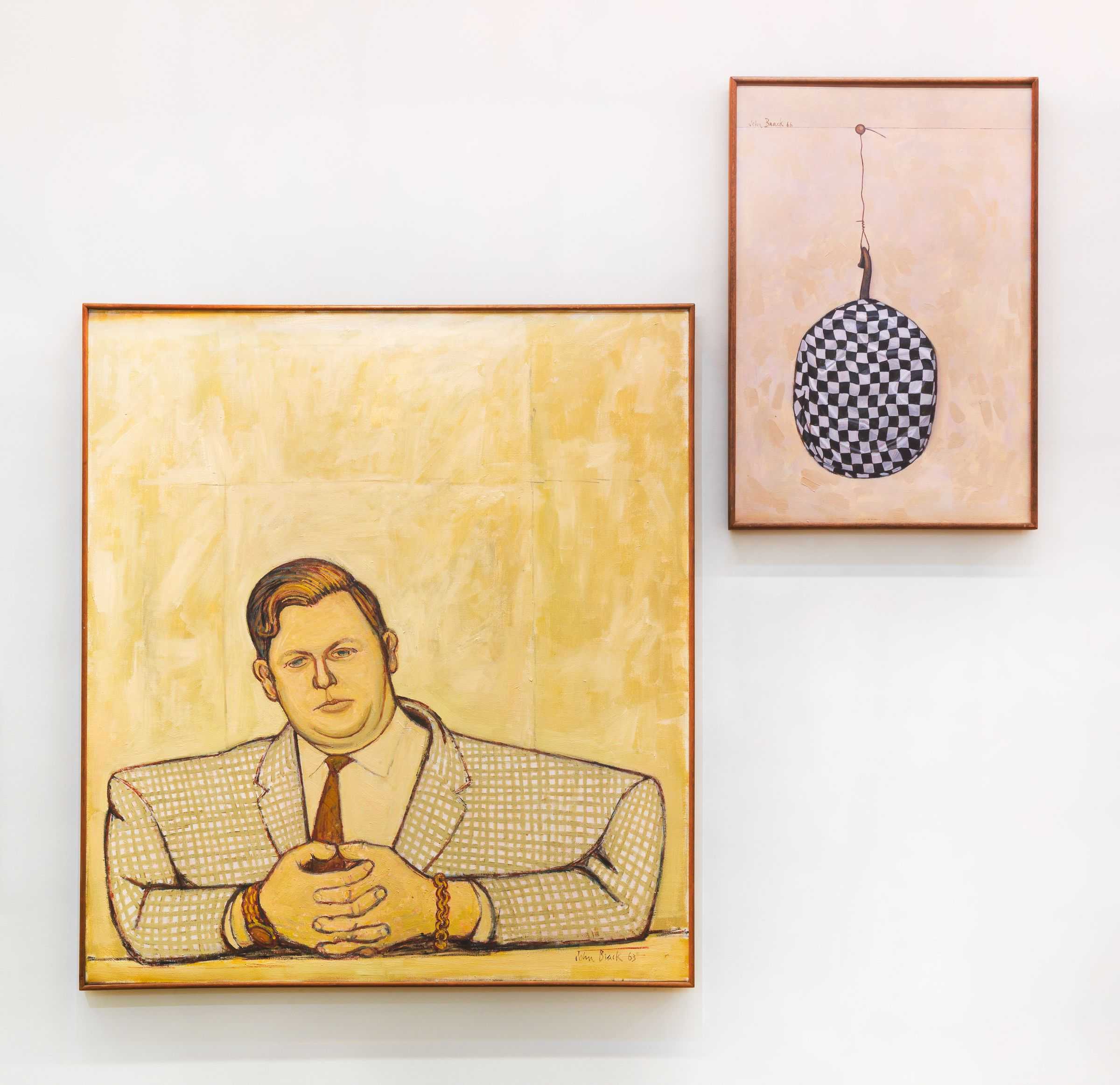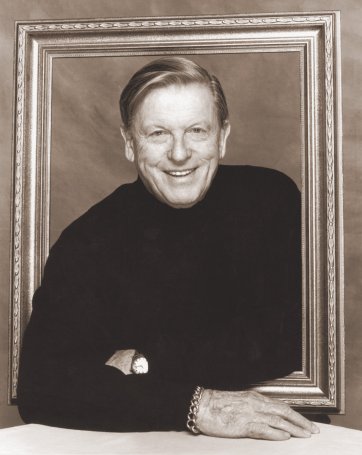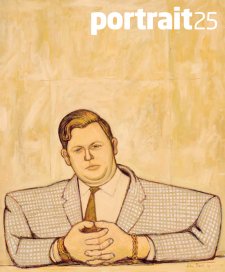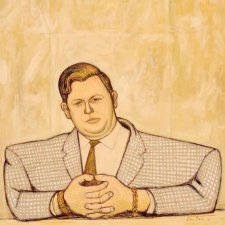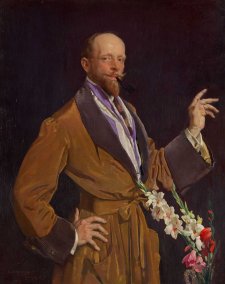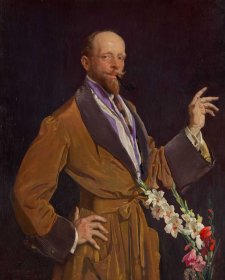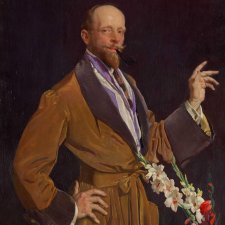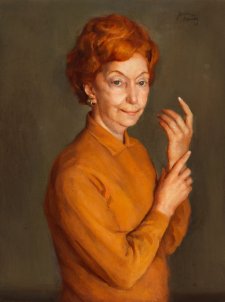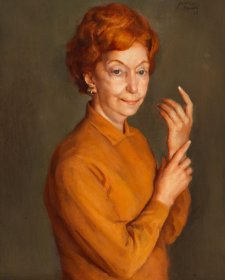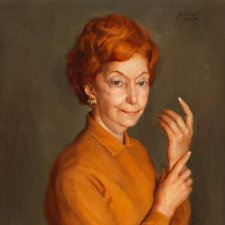Recently, Kym Bonython, cattle breeder, musician, jazzographer, entrepreneur, racing car driver, art consultant, gallery owner, broadcaster and author, generously donated Portrait of Kym Bonython and Portrait of Mr Bonython’s speedway cap painted by John Brack to the National Portrait Gallery.
John Brack was an observer, he analysed what he saw and attempted to present it in an objective manner. Brack once commented that:
My portraits are not simply a sort of photograph appearance of the subject. I call them cerebral paintings. I am interested in obtaining a synthesis which is a commentary on the subject and human conditions. The portrait is not just the subject but what he means in the past, the present and the future.
Kym Bonython experienced this personally as a result of having commissioned John Brack to paint his portrait in 1963. The portrait of Bonython is accompanied by a smaller work produced three years later, featuring his chequered speedway hat dangling from a string like an intriguing work of Op Art. In his autobiography Ladies’ legs and lemonade Kym records his initial response to the painting: When at last I saw the finished work
I was a trifle disappointed, because I thought there was overmuch emphasis upon a rather ill-fitting sports coat and my gold wrist watch and identity bracelet. However, I realised that Brack had sought to bring out the more extrovert side of my character, and so I wrote to him and asked whether he would be willing to add at least a portion of my celebrated chequered cap in what I unwisely referred to as ‘that blank area in the top right-hand corner of the picture’. Of course I could not have chosen a less tactful phrasing because an artist regards every part of a painting, including the ‘blank spaces’, as part of the composition. Brack replied, ‘There is no blank area in the top right-hand corner of the painting!’ Brack’s compromise was to paint a special small painting of his speedway cap that could be hung alongside his portrait.
Hugh Reskymer (Kym) Bonython was born in Adelaide in 1920. After leaving school he volunteered for the Royal Australian Air Force and was a flight lieutenant during World War II; he served as a reconnaissance, torpedo bomber, and Mosquito pilot for five years, and was awarded the Distinguished Flying Cross and the Air Force Cross. After the war Bonython went back to South Australia and began a successful farming venture, breeding Jersey cattle. Bonython sold the farming business to become a promoter and competitor at the Rowley Park Speedway from 1954 to 1973. Also taking a keen interest in speedboat racing he became an Australian Champion in both sports in 1956. Later in life Bonython played a key role in the planning and development of the Adelaide Grand Prix.
From a young age Bonython had a keen interest in music. Bonython was still a schoolboy when he presented his first radio jazz programme in 1937 and he continued broadcasting with the abc for nearly forty years, establishing himself as a major promoter of jazz music in Australia and even had his own record shop in the mid 50s. Bonython organised his first jazz concert in 1954. Since then he has brought out to Australia jazz legends such as Dave Brubeck and Thelonius Monk.
Kym Bonython began to seriously collect art in 1945 and has written six books on modern Australian painting. He earned a reputation for an infallible instinct for recognising new, unsung, innovative artists. As an owner of two art galleries, one in Adelaide which he ran off and on during 1961–1983, the other in Sydney, which he owned from 1966 to 1976, he promoted and encouraged Australian artists.
After making his mark as an art dealer in Sydney, Bonython returned to Adelaide in 1972. From his family, he brought Eurilla, the family mansion since 1917, where Kym had lived most of his life. In 1983, Eurilla burnt to the ground during the Ash Wednesday bushfires. When the fires swept down Mount Lofty all of Bonython’s possessions, among them an art collection that included works by artists such as by Lloyd Rees, John Olsen,
Arthur Boyd, Sidney Nolan and Brian Westwood along with his treasured collection of over 5,000 jazz records, were consumed by flames. Bonython rushed from Adelaide in an attempt to save his home only to find that there was nothing that he could do. He fled his house as it was bursting into flames and was able to salvage little; however, he did rescue the portrait John Brack had painted of him along with the accompanying painting of the speedway cap. Such is the extraordinary history of this fascinating diptych.
